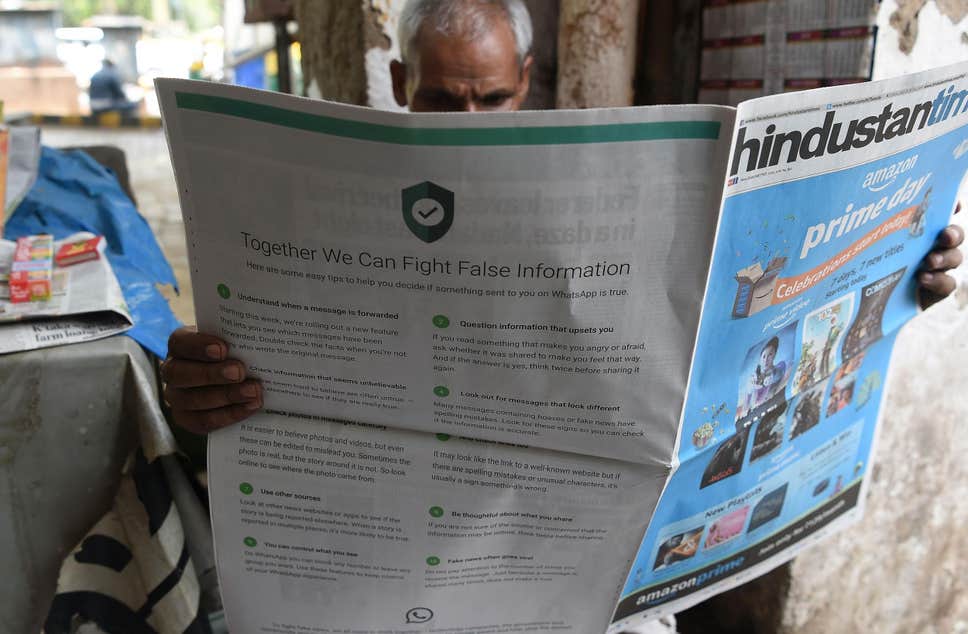
Digital Era has brought a lot of opportunities as well as challenges. The amount of information available online and the ease with which it can be shared across thousands in a matter of seconds is phenomenal. However, It poses a serious threat of that information being incorrect or fabricated. We will do a quick fact check on fake news in India. We will discuss the following aspects involving fake news:
- What is fake news? We will look at a few common examples.
- How Fake News is created? There are Fake News generator tools and advanced technology like Deep fake are also being misused.
- How to spot fake news? Harmful Impacts of false information and click baits.
- List of fact-checkers in India.
- How to report fake news in India? Role of Government and other agencies.
- What is IFCN (International Fact-Checking Network)?
- Conclusion – Quick reminders to avoid spreading the rumours.
A few years back a phrase was coined, “Data is the new oil” However, the information generated by refining that data is oil or gold in real sense. Information is equivalent to money and money does bring few side effects and security issues with it. Isn’t it? No wonder online scams are rising every day. “Fake News” and “Online Scams” or “Frauds” are also interrelated. We will dig deeper when we discuss the harmful effects of Fake News especially in a country with a largely illiterate population. As per a report published by UNESCO in 2014, “India has 287 million illiterate adults, the largest population globally and 37% of the world total. Fresh numbers will be available post new census which should happen soon.
What is Fake News?
As per Wikipedia, Fake news(also known as junk news, pseudo-news, alternative facts, or hoax news) is a form of news consisting of deliberate disinformation or hoaxes spread via traditional news media (print and broadcast) or online social media.
In simple language, any news which is intentionally misleading, incorrect, incomplete, false, and/or inaccurate. It can be misused for propaganda (to influence people) Use of social media, like Facebook, Twitter or messaging service like WhatsApp allows users to easily share pictures, videos and hence spread of fake news is easy and super-fast.
Recent Examples:
Recently Bollywood actor Sushant Singh Rajput committed suicide which was tragic and affected all of us. However, it didn’t stop people from creating fake news. One of India’s fact-checking site Alt news did the fact check and found the inaccuracies. Click on links to know details of fact-checking steps performed. These can help spot fake news by people like you and me as well.
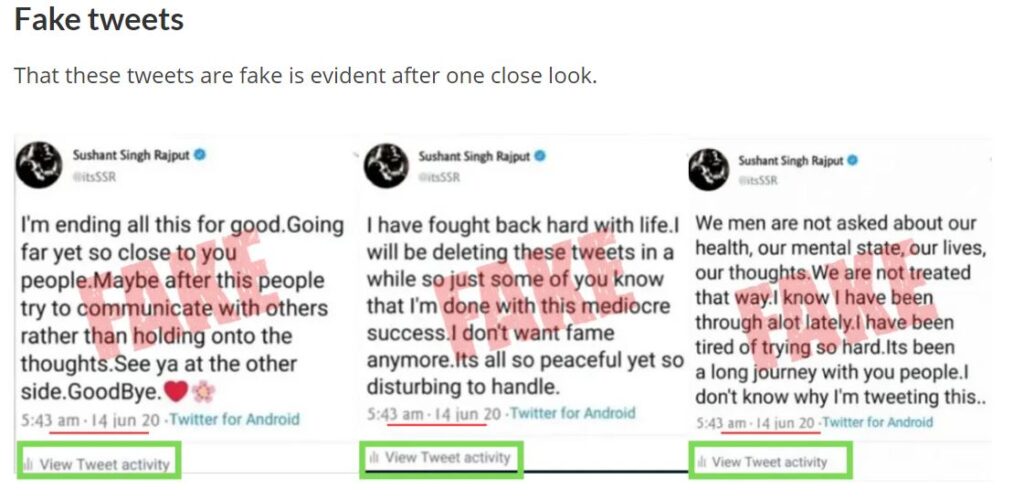
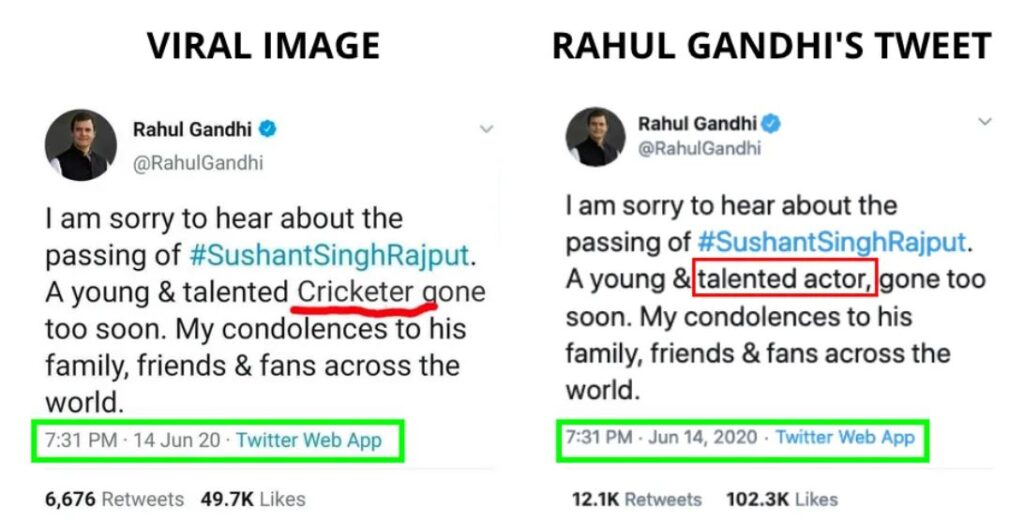
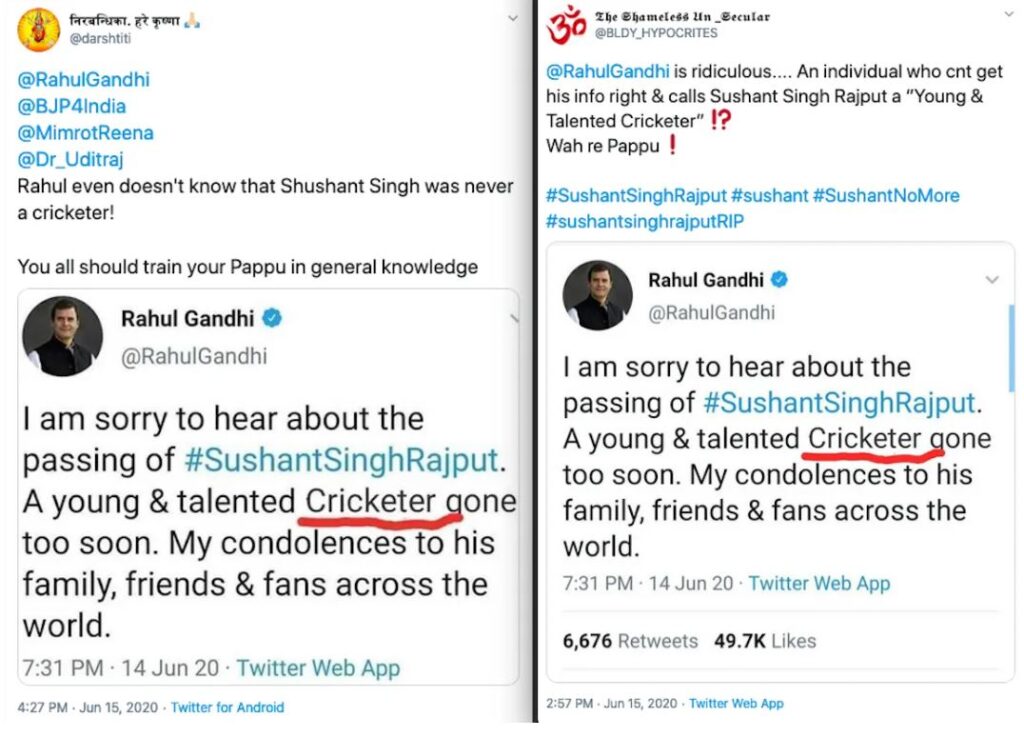
Alt News, One of India’s well-known fact-checking websites did their analysis and published the correct details. However, as expected, the fake news already reached millions; impacting many who were already shocked at the loss of a young celebrity. What’s strange is even leading mainstream media like Aaj Tak quickly published the incorrect information from social media. They had to delete it later. Do check Alt News Social Media handles for similar debunks. Alt News Twitter, Alt New Facebook

In another example not so long ago, At the beginning of the Covid-19 lockdown in India. Prime Minister Care Fund (PMCares) got introduced for collecting money as a donation. Incorrect UPI (Unified Payment Interface) IDs for SBI were circulated via social media to mislead people, and a lot of hard-earned money which was supposed to go to Covid-19 relief work ended up going to fraudsters. SBI had to tweet the below picture and educate people about correct UPI IDs. You can read here to learn more about this fraud.

How Fake News is created?
There are many ways of how fake news is born. Let’s see the most common ones.
Social Media and Messaging tools:
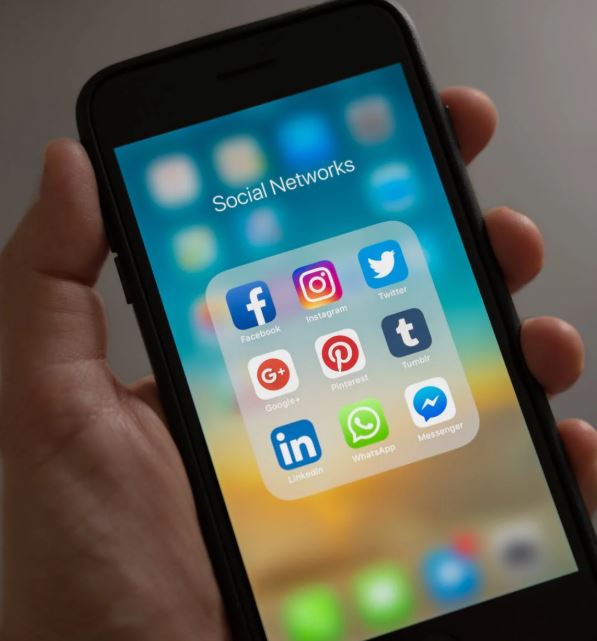
We have already seen a few examples of social media is used to create and spread fake news. Social media and messaging tools like Whatsapp have become the most common source of fake news in India. In this age, opinions become news quickly. One screenshot travels far and impacts many who think it is actual news.
Fake News Generator
Yes, you read it correctly. there are websites and mobile apps that let you generate fake news. Don’t believe everything you see. Even if it looks like a real new paper clip or news clip from television.
Let’s do a live exercise, Go to your browser and type “Fake New Generator” you will see a list of websites that lets you create fake news instantly. Scroll down you will see Newspaper Clip Generator. I’m sure these were created for fun, but you can’t deny how they are being misused from time to time. Since I like Cricket here’s is what I created. Did you notice how Social Media buttons are there which lets you share it instantly?

Advanced Version – Deep fake Technology :
Deepfakes (“deep learning” and “fake”) are synthetic media in which a person in an existing image or video is replaced with someone else’s likeness. Below examples will help understand more about this technology and how harmful it can be.
I’m not saying using deep fake is bad. Just like any technology it can be used for good or bad depending on the intention. Below is another example that explains how this technology is evolving and used more and more.
How to spot fake news?
We now know, what is fake news and how they are created and spread via different forms of media. The digital world has given this problem and it also has the solution.
Be Skeptical, quick Google Search can help:
- The most basic and first step of fact-checking is to do a Google search and see the result. You will find out everything related to it. Like recently there was a hoax around meat products as a carrier of coronavirus. This started in April and was debunked by fact-checking sites and Govt Official via newspapers. However, it doesn’t stop the unintentional WhatsApp forwards Here’s an article which talks about the loss to meat and poultry industry due to this false news spread – Read Here. Google also provides an option for a fact-checking tool called Fact Check Explorer worth bookmarking for quick use.
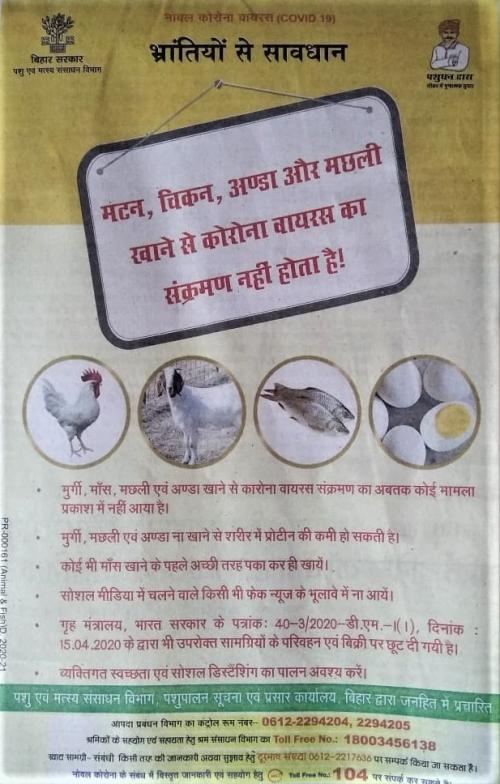
Read Beyond Headlines –
- To get maximum clicks, the use of clickbait has become very common. Don’t trust the headlines blindly. Headlines are often misleading and cater to our biases. Let’s say you are ideologically against a political party and you see anything negative about them; you immediately think it to be true and forward to your contacts.
Here’s one interesting example of misleading quotes – Modi Only 2,200 Taxpayers With Income Above ₹1 Cr? PM Modi Misquoted Boomlive fact-checked and found; the context of the statement was different and it was tweaked to fit the narrative of opposition parties.
Political parties do this often to demean each other. It’s like you are distressed and say “I Hate God, So many people are dying due to Corona, Why can’t he save them” and others quote that you said, “I hate God, He can’t save the humans”. See the difference. suddenly you become a villain. It’s modern-day gossip which is deadly.
Watch out for altered photos –
- Images can be easily manipulated and used to spread false information. At times pictures from different times and places can be used for fake news. Using Google for a reverse image search helps in finding out if a photo is fake if you can’t figure out with your naked eyes. Metadata2go is another excellent resource not just for images but for other file formats like document, audio, and video. You can simply upload the file in question and get all the relevant details stored within a file. These information is not usually visible (like time of creation, location of the photo taken, technical aspects of the files) These are super helpful. I highly recommend checking their Site – https://www.metadata2go.com/ for more details.
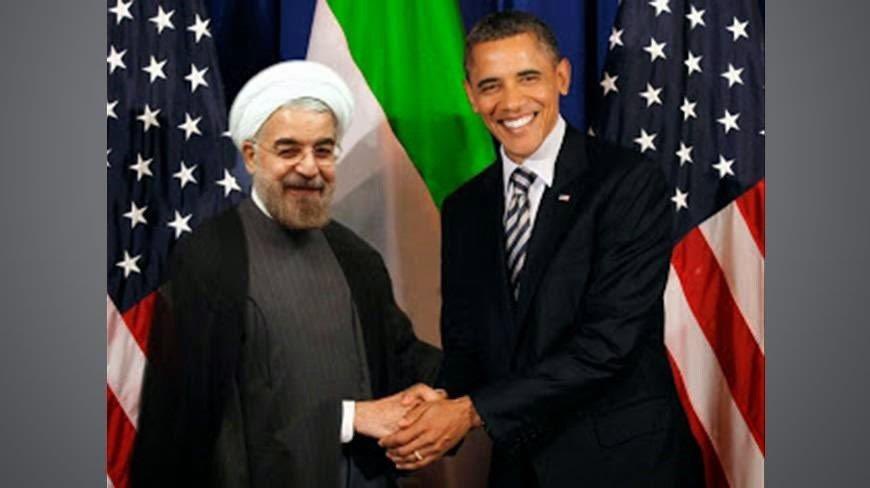
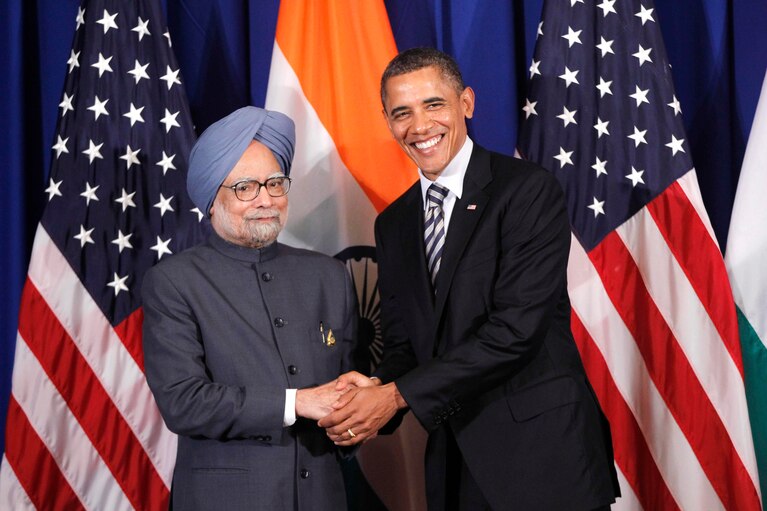
Above pics are an example of how fake pics are used by well-known people intentionally. In this case, everyone knew the pic is doctored. However, the intention was to make Obama look bad and I am sure many of us would have believed it at first look. Do read this article on Washington Post if you are interested to know more. – How to spot a Photoshopped image, or, The Problem with the Internet
Grammatical Error and misplaced image alignment:
- Doesn’t matter how hard someone tries to make the fake look real, they end up making small mistakes; that can help you find the difference between real and fake. If you look closely, Fake news often has spelling mistakes, wrong grammar, and alignment mistakes.
Numbers and Statistics
- Should always be checked from the Government’s official websites or reliable sources only. This one is tricky but try to find out the most reliable source. or use the tried and tested Google Search: You may find something on fact-checking sites.
Check if the news is directed at a person or community:
- Headlines targeting specific communities or religions can be very harmful. It creates a bad environment in society by instilling fear and hate. India is known for its diversity and people from many religions and classes live together, conflicts are very common. However, with Fake News and Social Media, it has become easier than ever before. Most news or headlines which make you angry, hateful, or fearful are false or incomplete. The problem is; by the time we realize the news was a hoax, the damage has already been done.
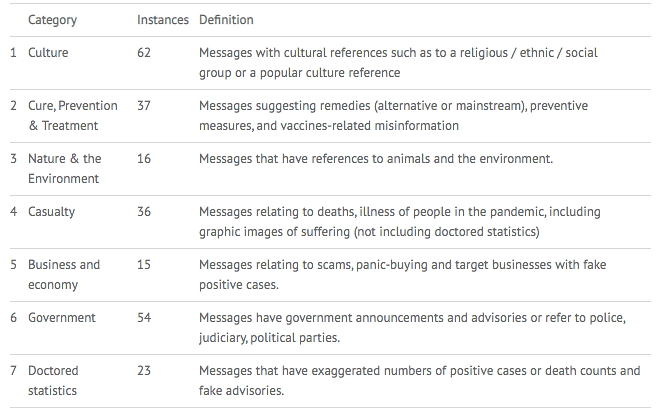
If you look at the first point, false messages with cultural references that got debunked have maximum instances in the study. The rise in the spread of false information has been sudden since the Covid-19 lockdown started in India, in the last week of March 2020. You can read more about the trends here. However, all is not bad during the lockdown, do read this post which is all about positivity and hope.
List of fact-checkers in India.
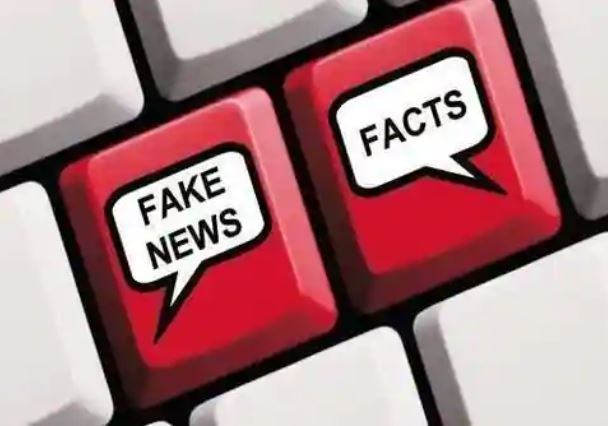
- https://pib.gov.in/factcheck.aspx
- https://reporterslab.org/fact-checking/
- https://www.factcheck.org/
- https://factly.in/category/fake-news/
- https://www.boomlive.in/about-us/
- https://factcheck.telangana.gov.in/
- https://www.altnews.in/
- https://www.metadata2go.com/
- https://www.thequint.com/news/webqoof
- India Today – Anti Fake News War Room (AFWA)
- Times of India -Times Fact Check
- The Hindu – Fact Check
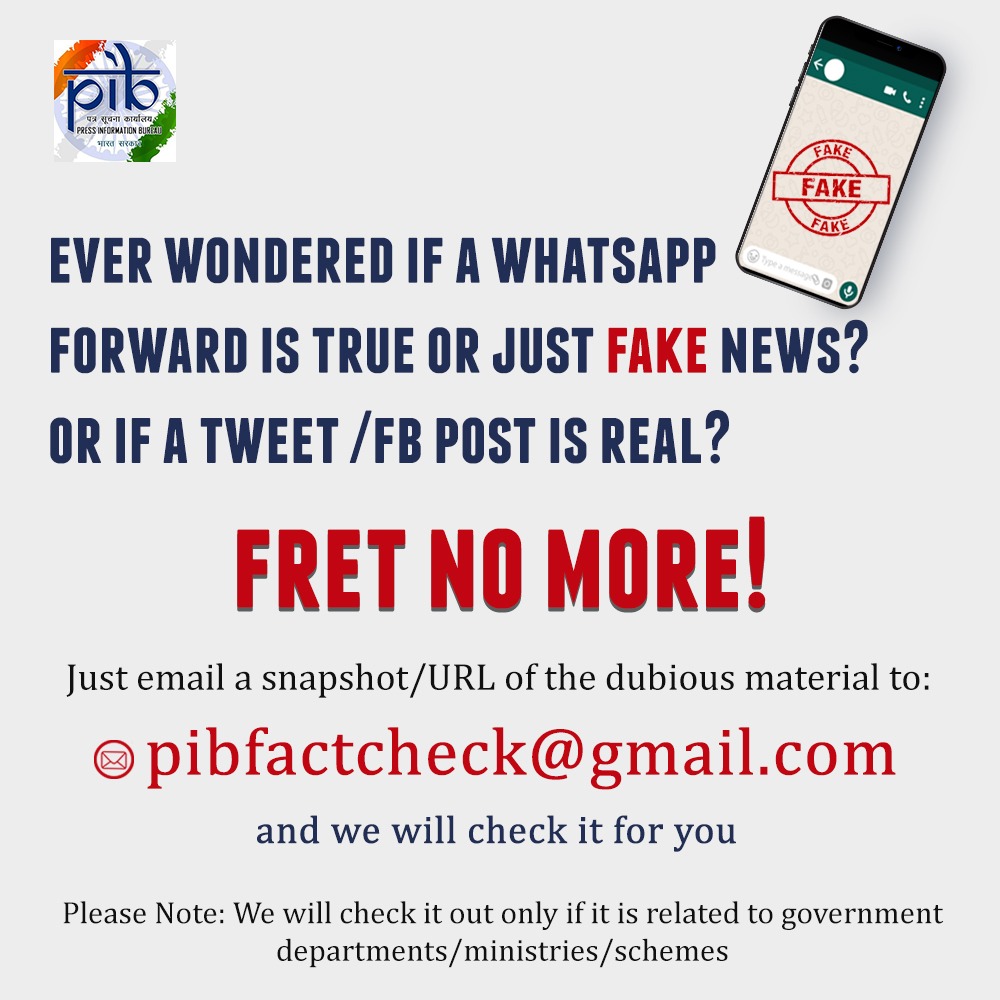
Want to know how these fact-checking websites work Read here for an example.
As you can see, many mainstream media The Hindu and TOI and India Today group have started their units for fact-checking looking at the spread of fake news. This is a welcome sign.
If you have an inclination towards this topic or in case fact-checking is needed in your area of work. This Blog is a comprehensive guide for Fact-Checking Methodologies and tools.
How to report Fake News in India?

Let’s take a look at various ways to report fake news in India. How government and law enforcement agencies are dealing with it? along with the role of Social media. Especially the increase in fake news impacting the fight against Covid-19 Pandemic.
“To counter the spread of rumours, a fake news verification module has been launched on our website. Citizens can report any suspected fake news and upload content for its verification and clarification,” Delhi Police, April 6th, 2020
- Keeping in mind the increase in fake news spreading hate and communal tension and also false news around Covid-19. Delhi Police recently provided an option to submit fake news online via their website, similarly, you can check websites for respective states/cities.
- National Cyber Crime Reporting Portal – This comes under the Ministry of Home Affairs in the Indian Government. Apart from Police Helpline across India 100, National Women Helpline Number 181 and state-wise cybercrime units. This portal can be used to report any online crime.
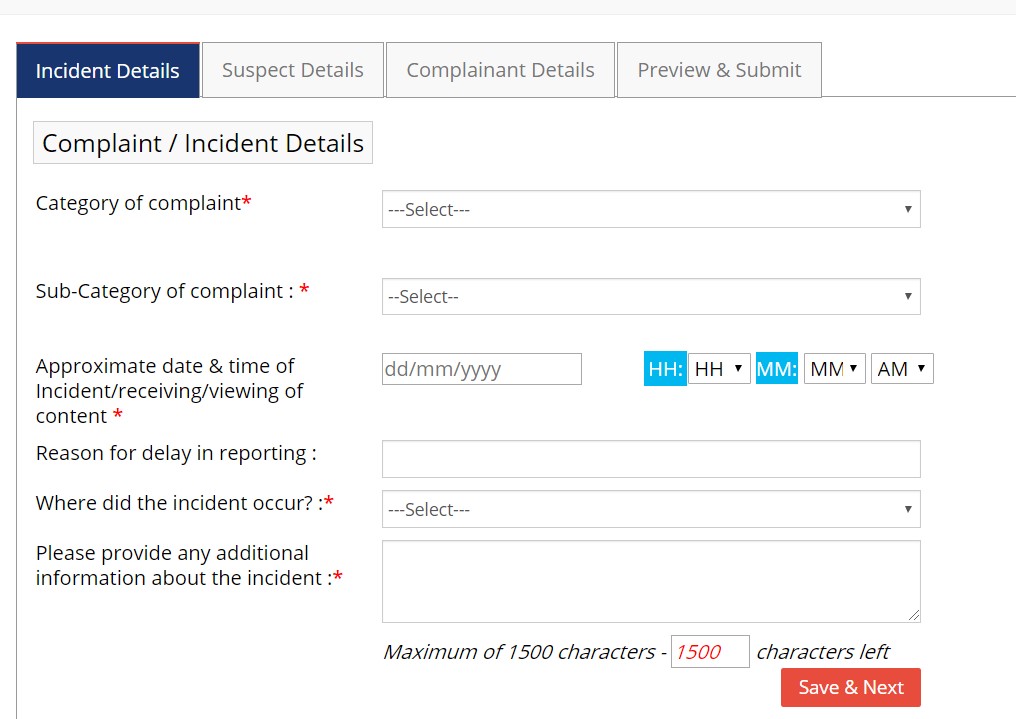
- Spreading rumours can get you arrested, there has been an increase in arrests related to spreading of fake news. Although it is necessary, however random arrests might not be the best solution. We need a clear cut definition of fake news and laws around it. Here’s a good article around it – Fake News Real Arrests.

- Recently, The Indian government has launched a chatbot on WhatsApp to address user queries and quell rumors on the coronavirus pandemic. The WhatsApp chatbot, ‘MyGov Corona Helpdesk’ can be accessed by sending a text to +91 90131 51515. It is equipped to address various Covid-19 FAQs, such as symptoms of the disease, precautions against contracting the virus, helpline numbers, affected cases in the region. Read here for details. I checked and this is working fine, It has various options like myth busters around Covid-19, helpline numbers and so on. It is worth trying if you haven’t used it already.
- Social Media’s Ownership, there is no denying, since social media has control over all the accounts, they are in the best position to curb fake news as well. You must have noticed there was a limit on WhatsApp forwards in India. During the 2019 national election in India Whatsapp had launched its fact check service. Read Here. European Union (EU) had also directed Social Media like FB and Twitter to publish reports on fake news.
These all are welcome steps, but a lot of work needs to be done to get hold of this menace of false information and rumor-mongering leading to disastrous situations.
IFCN (International Fact-Checking Network)
The International Fact-Checking Network (IFCN) is a unit of the Poynter Institute dedicated to bringing together fact-checkers worldwide. The IFCN was launched in September 2015 to support a booming crop of fact-checking initiatives by promoting best practices and exchanges in this field. IFCN :
- Monitors trends, formats, and policy-making about fact-checking worldwide publishing regular articles in the section below and in a weekly newsletter.
- Helps surface common positions among the world’s fact-checkers.
- Promotes basic standards through the fact-checkers’ code of principles and projects to track the impact of fact-checking.
- Funds annual fellowships, a Fact Forward Fund, a Fact-Checking Innovation Initiative, and a crowdfunding match program.
- Convenes fact-checkers in a yearly conference (Global Fact) and promotes collaborative efforts in international fact-checking.
- Provides training in person and online.
- Advocates for more fact-checking, including through an annual International Fact-Checking Day.
Interesting Fact: This year the IFCN brought together fact-checkers from across the world to form the #CoronaVirusFacts Alliance. and created a searchable database of COVID-19 fact-checks with over 3,000 submissions so far. Fact-Checking Day is an annual celebration and rallying cry for more facts in public health, journalism, and everyday life. It is meant to be light-hearted, but practical. (Source – https://www.poynter.org/ifcn/)
Conclusion:
We will find vaccines for Covid-19 soon, however for this pandemic of Fake News is not going anywhere, we will have to be more vigilant and keep ourselves aware of new fact-checking ways. Few reminders on our role as citizens.
- Don’t trust everything you see on social media or even in the news.
- Do not forward anything in a hurry, especially the messages which ask you to “forward it to as many as possible” Do a quick search on your mobile or laptop to confirm such news or forwards. After that, if you think it is really important and necessary only then forward it.
- If you notice anything harmful or dubious. Submit it for a fact check. Report it to authorities. So, they can take the necessary action.

Awareness has already beginning to show among many of us in terms of differentiating between real and fake news. What’s your take on Fake News In India? What is lacking? Anything else which you feel should be added to this article? Do share your views in the comment sections. I intend to keep this article updated with any relevant future updates around fake news. Share this article further only if you feel it is worth it and not misguiding in any way. Let the change in mindset begin right here. Thanks for your time!
Don’t trust everything you see. Even salt looks like sugar.
References:
- Wikipedia – https://en.wikipedia.org/wiki/Fake_news
- The Hindu – https://www.thehindu.com/
- Alt news – https://www.altnews.in/sourcing-of-inform/
- IFNC – https://www.poynter.org/ifcn/
- YouTube – https://www.youtube.com/
- AlJazeera –https://www.aljazeera.com/news/2019/04/india-whatsapp-launches-fact-check-service-fight-fake-news-190402104138090.html
- TheQuint – https://www.thequint.com/news/webqoof/increase-in-communal-tone-in-covid-19-fake-news-in-india-study
- Boom Live – https://www.boomlive.in/politics/only-2200-taxpayers-with-income-above-1-cr-pm-modi-misquoted-6879
- Standard.co.uk – https://www.standard.co.uk/news/world/india-has-more-fake-news-than-anywhere-else-in-the-world-report-says-a4059876.html
- CNBC – https://www.cnbc.com/2019/10/14/what-is-deepfake-and-how-it-might-be-dangerous.html
- BBC – https://www.bbc.com/news/world-46146877
- Journalist Tool Box – https://www.journaliststoolbox.org/2020/06/16/urban_legendsfact-checking/


Great article
Thank you so much for the read. Glad you liked it !
बहुत बढ़िया विषय पर लेख लिखा है आपने ।खबरों की इस तरीके से दिखाया जाता हैं कि कोई विश्वास कर लेता हैं कि यही सही हैं इसमे सबसे बड़ी भूमिका हमारे न्यूज़ चैनल्स की हैं ।
Thank you so much. सही कहा गलत खबरें बहुत खतरनाक साबित होती है। ये ज्यादा से ज्यादा लोगो तक पहुंचे इस लिए हिंदी में भी पोस्ट करूंगा जल्द ही !
That’s one hefty and impressive article on fake news!! The author has done full justice to the article and hasn’t left any stone unturned..
Truth is, most of us, at some point in time have forwarded fake information without getting into the depth of it..With this article, we would be much wiser in our approach of trusting anything thrown at us via social media..
Thank you so much for read. I’m glad it resonated and you found it meaningful. Keep sharing the message across. That’s the least we can do!
Thank you for writing this, very detailed and well researched and the need of the hour. Keep on writing…..sharing this across my friends circle.
Thank you Juan!
Thanks a lot for sharing this with all folks you really know what you are speaking approximately! Bookmarked. Kindly additionally visit my web site =). We will have a hyperlink alternate agreement between us!